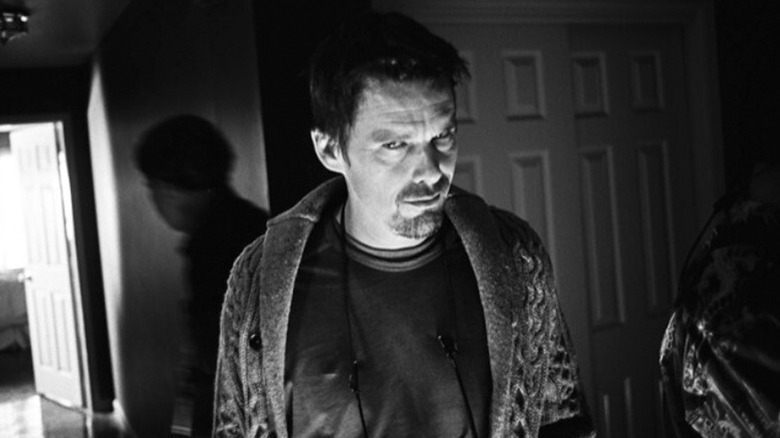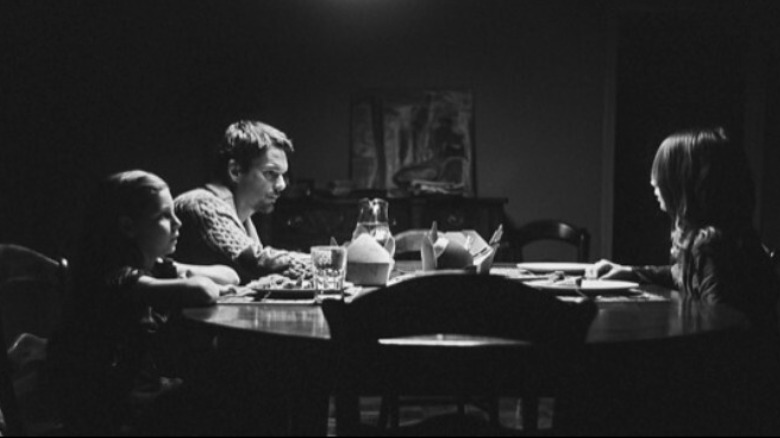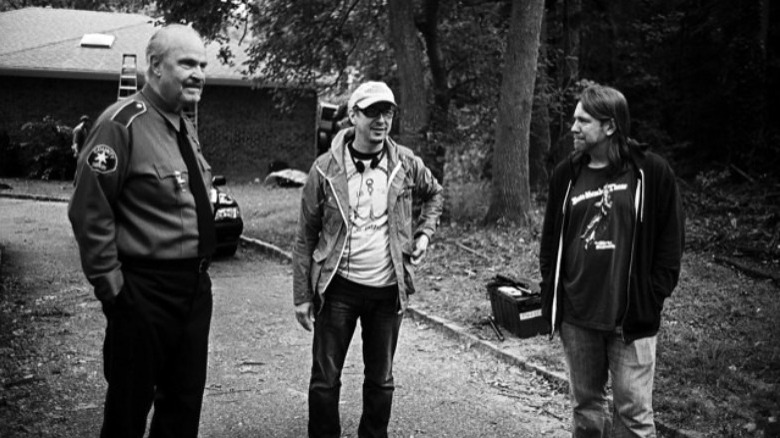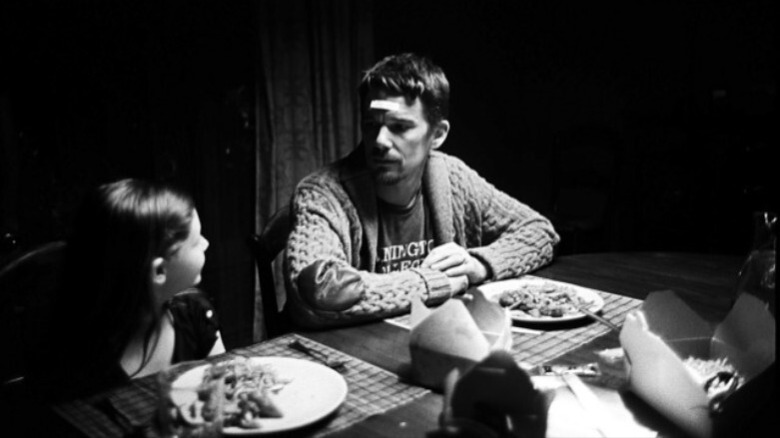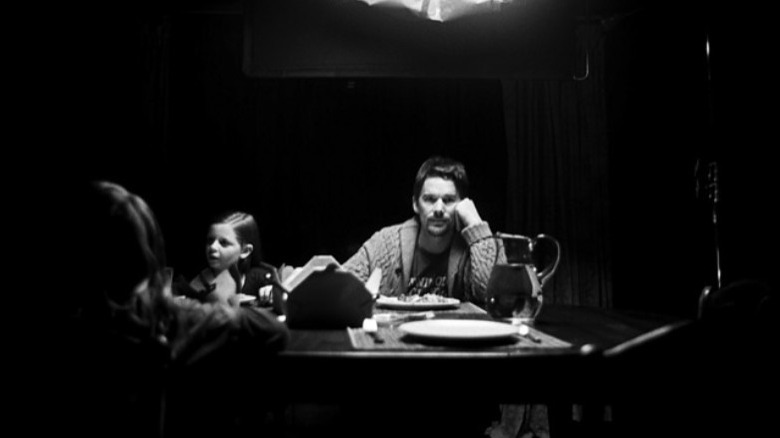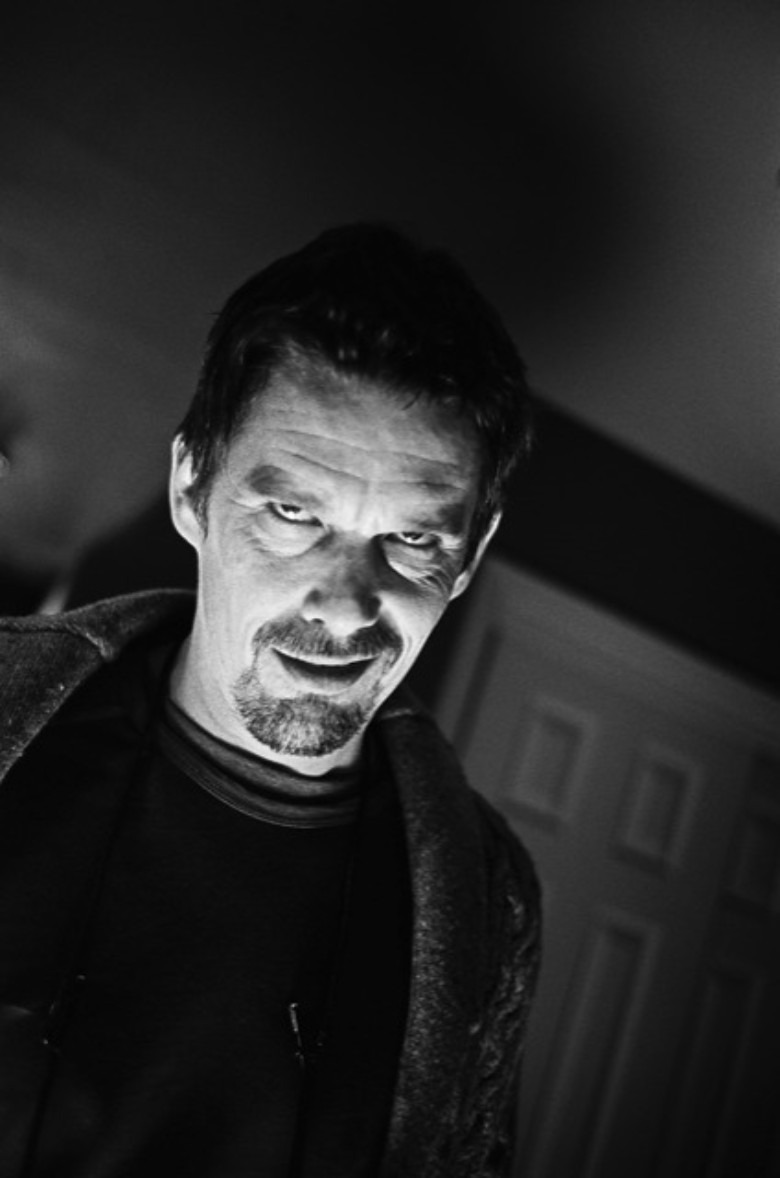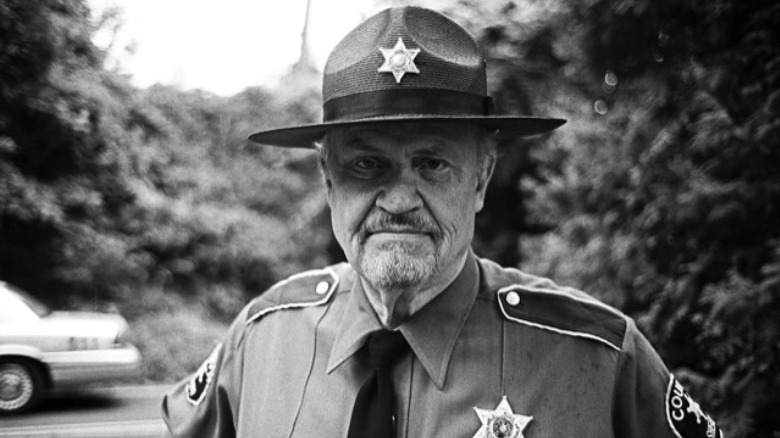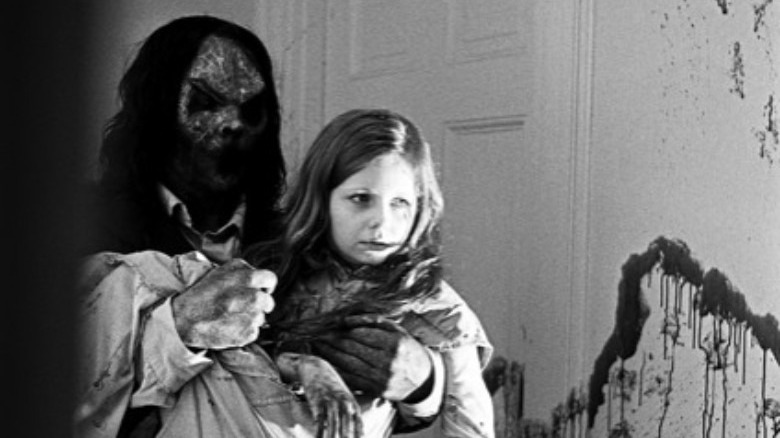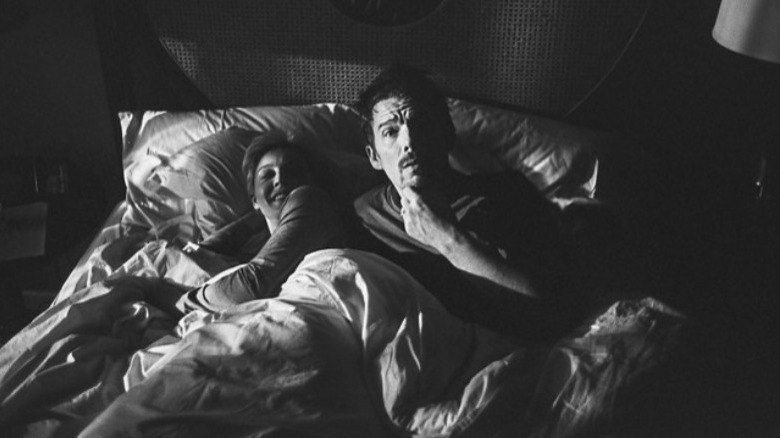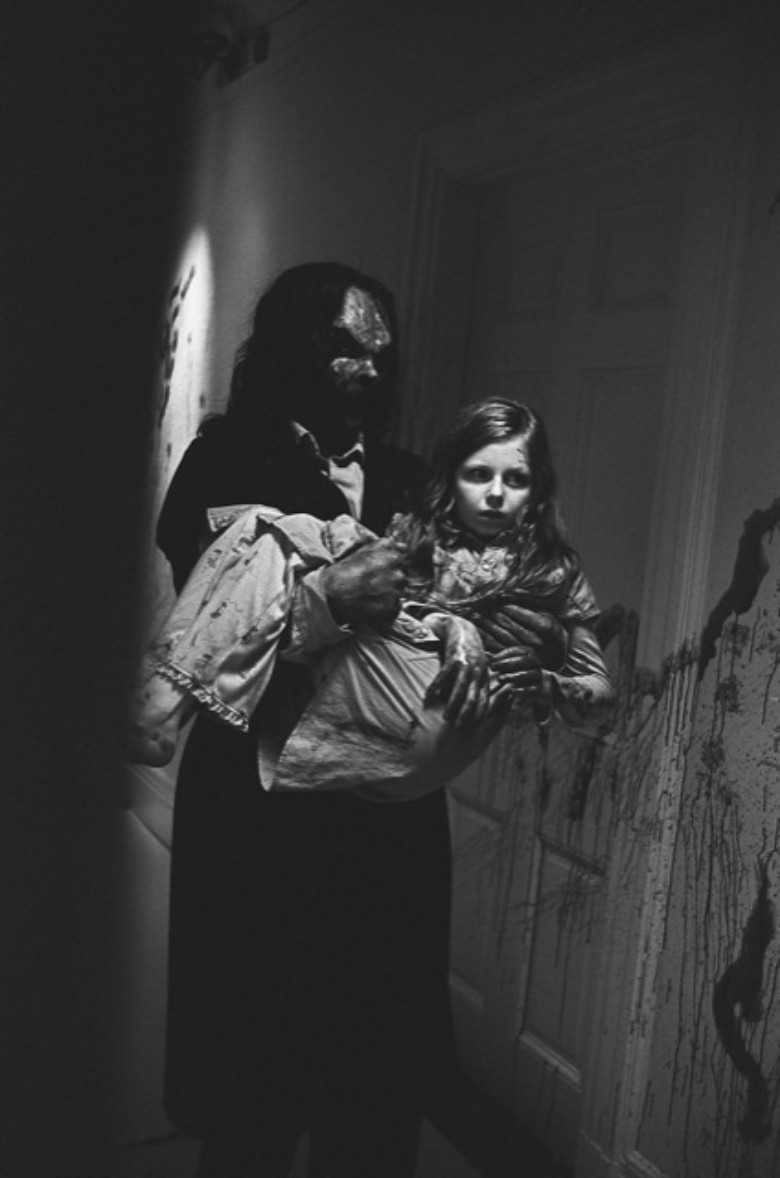Cinematographer Chris Norr Takes Us Behind The Scenes Of Sinister [Exclusive Interview]
It has been a full decade since "Sinister" hit theaters in 2012, and while it may not have felt like it at the time, it was a watershed moment in modern horror cinema. For one thing, the movie was a huge success, helping to establish the model that has made Blumhouse Productions a $5 billion box office behemoth. For another, director Scott Derrickson and writer C. Robert Cargill's tale of a washed-up writer looking for a story in a dangerous (and haunted!) place has earned a reputation as one of the scariest movies of all time.
In honor of the film's 10th anniversary, I spoke to Derrickson, Cargill, and several others to document the making of the movie in an oral history, which you can read right now. One of the people I spoke with was cinematographer Chris Norr, who provided a lot of insight into crafting the film, not all of which could be used in the actual piece. He was also kind enough to share some behind-the-scenes photos with us that were taken during production, which are peppered through the oral history piece. We've decided to highlight all of those photos here, in addition to sharing a bit more insight from his time on the film.
Making Sinister look like Sinister
Norr worked closely with director Scott Derrickson to help craft the look of the film, which is, in a word, dark. And it is dark in just about every sense of the word. "I was involved in designing the look of the film along with Scott, of course, and designing the architecture of the lensing, and the camera movement," Norr says. "Obviously, all that falls into creating something [that is] scary or not."
It's safe to say the final result was quite scary, particularly for a mainstream film — so much so that it was scientifically determined to be the scariest movie ever made. Whether or not that is ultimately true is largely up to the individual to decide, but they certainly succeeded in making a scary film. But what inspired that, exactly?
"Scott and I had a couple main references that really were our template, not that we copied it. There's the painter [Michelangelo Merisi da] Caravaggio. Scott and I really wanted to have really dark fields of set or areas in the room," Norr says. "We wanted some blackness, not just darkness. If you look at Caravaggio paintings, there's lots of large fields of blackness with no detail in the shadows, and we were really looking for something like that."
Aside from the work of Caravaggio, they also looked to a certain thriller from the early '70s for inspiration.
"Another reference we had was Alan Pakula's 'Klute,' which had a lot of very dark scenes and was unnecessarily dark. It sets the tone, obviously, but there's even a dinner scene at the beginning of 'Klute' where it's practically silhouette."
Digital film and the darkness
Another thing that needed to be considered with "Sinister" was the advent of digital film. While just about every major Hollywood movie is shot on digital now, a decade ago, that technology wasn't nearly as widespread. For Norr and Derrickson, the insistence that they shoot on digital (which certainly helped when it came to maximizing their small budget) presented some challenges.
"Digital (film) was just becoming mainstream then, and originally we thought we were going to be shooting on film, and I think Blumhouse insisted that we shoot digital. Digital is very easy to make black, but it looks very artificial where the contrast is just boosted, and we really didn't want that. I really had to deal with lighting where the blackness was really there, not something you just crunched down in post or something like that. Because the digital cameras are very sensitive, it was a lot of work on set. So there were times where I was putting black on the ceiling, putting black everywhere so there's no light going into certain parts of the room."
"Sinister" was made for a mere $3 million, which is not a lot of money for a wide release film — especially one that has some big set pieces, like burning down a garage or a big, creepy attic. But for Norr, restrictions tend to lead to innovation. "I feel as an artist, when I'm restricted with budget, I become more creative. Basically, I knew going in it was a low budget film, so I was already thinking out of the box. But it also let us take more chances that maybe if it was a bigger studio, it would probably not have the look that it did."
Shooting on real Super 8 cameras
One of the major drivers of the movie is a series of Super 8 films that Ethan Hawke's character, Ellison, finds in the attic of his family's new home. These "kill films," as they came to be called by the filmmakers, were absolutely essential to drive the movie's story forward. They also happen to contain some of the biggest scares, including the now-infamous lawnmower scare. To help make those kill films look authentic, they actually shot them on Super 8 cameras. Though, once again, that presented challenges.
"We actually had to go out and shoot Super 8, which was a little nerve-wracking because the Super 8 cameras, there's not a factory guarantee on everything," Norr says. "They don't make new Super 8 cameras. There's barely any equipment around. I ended up buying a Super 8 camera because of the unreliability of them, even when you rent them from a rental house."
That unreliability led Norr to look for creative solutions to cover their bases, but in one instance, the old cameras didn't behave properly. Thankfully, what was first thought of as a mistake ended up actually contributing, in a positive way, to the final look of the film as we see it:
"I always wanted to cover everything digitally, but they were like, 'No, let's just shoot it Super 8.' And we did. I kept thinking we should always cover ourselves by doing a take on a small digital camera just in case something went wrong. The last scene we shot, which was the bloody hallway, a lot of it was out of focus. At first we thought, oh my god, it's a disaster. But as we looked at it, it looked so cool. We were like, 'No, this is great, actually.' So it just was a mistake that ended up making it look better."
Being truly scared
Again, it cannot be emphasized enough just how much "Sinister" works because it is genuinely scary. And we're not just talking about jump scares — this is a deeply unsettling film. It's one thing, however, for a movie to work for the audience in that regard. It's another thing for it to actually scare the filmmakers. But Norr had a moment where he realized what they had done well before the movie actually hit theaters.
"This was my first horror film and I was just going through the steps," he remembers. "I studied other things I thought were scary. I was just in work mode and tend to be — any time I'm on a project, I'm not really absorbing what's happening." But it was during the editing process, specifically during a color timing session, where he understood just how scary the film was.
"There comes a stage after they edit it that I have to do color timing. Because the main post [production] was in, I believe Los Angeles, and I was in New York, Technicolor had this system where they can live stream it to their theater at Technicolor in New York, and I can grade it [there]. This was several months later, after the movie had been finished, I hadn't seen anything. I had to go into this color session at midnight or 11:00 PM by myself, and I'm in this big screening room alone, talking to someone on the phone in L.A., and just talking about coloring, and I was scared s**tless. I was like, 'Oh my God, this is a scary film.' I was actually shaking. That's when I really realized what we had created."
A special place
In the end, "Sinister" grossed $82.5 million, making it a huge hit relative to its tiny budget. Sure, Norr and company knew they had created something scary. But did they know it was going to be a hit?
"I wasn't really expecting much. I'm just a professional, so I just move forward from project to project," Norr says. "I didn't expect it to be as popular as it was and I'm very proud of the project. Sometimes you make some really great cinema, but it doesn't get appreciated because the movie's not successful." That most certainly wasn't the cast here.
Even as Norr has gone on to have a very successful career, working on hit shows like "Gotham" and "Succession," this one still has a special place in his heart. "It's something out of all my stuff I'm still extremely proud of. I take every project as it is and I don't really compare one to the other. It's just everything's a new adventure, a new visual language. I've brought what I did on 'Sinister' a little bit to other projects where I could. "
